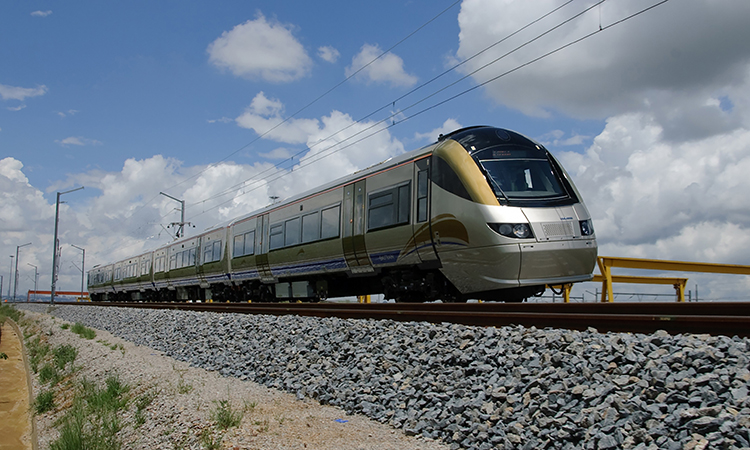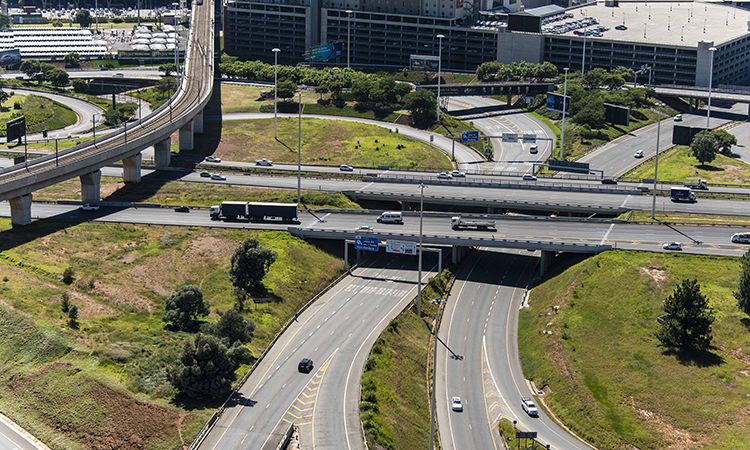Fire safety and emergency management on the Gautrain Rapid Rail Link
Posted: 11 May 2021 | Chelina Bodhie | No comments yet
Chelina Bodhie, Senior Manager for Safety, Health, Environment and Quality at the Gautrain Management Agency, speaks to Global Railway Review about the safety protocols that make the Gautrain Rapid Rail Link the safest transport mode in Gauteng.


In general, people have become increasingly conscious of safety and the way that they manage their choices. People choose transport options not only based on cost, but also safety, convenience, timing and comfort. The use and power of technology has transformed the field of transport and the way we know it. It has made it simpler, faster, more efficient and convenient.
Rail has been hailed as the backbone of transport globally and, in South Africa, this mode of transport has been used since 1859 and has come a long way since its introduction. Moving thousands of people to their destinations daily, rail has become a preferred mode of transport for being the safer choice.
Improvements on the overall rail system in South Africa have begun with new locomotives, improved station facilities and, most importantly, emergency management protocols. In the Gauteng Province of South Africa, one of the most radical and critical changes to the rail sector came with the construction of the Gautrain Rapid Rail Link (Gautrain) and its commencement of operations in 2010. The system was a shift from the traditional train operating systems in the country to a rapid rail system servicing major areas in Gauteng. The Gautrain is built to the highest European safety standard and follows the strict safety management regime and has, as a result, the lowest safety incident rate than any other transport mode in Gauteng.
The Gautrain system is built on international standard gauge operations, with a maximum speed of 160km/h, and operates Bombardier’s tried and tested Electrostar series of rolling stock. The stations boast secure under-cover parking, together with a ‘feeder and distribution’ bus service that is integrated with the train service. The Gautrain is also built to ensure the protection of passengers and assets in case of an emergency, with advanced warning fire protection. The Gautrain subscribes to the following South African Regulations and Standards:
- SANS 10400: Part T – Fire Protection
- The Occupational Health and Safety Act 85 of 1993
- Railway Safety Regulations
- Emergency Management Services Regulations.
Furthermore, the Gautrain is built in compliance with the European Safety Standard EN 45545: Railway Applications: Fire Protection on Rolling Stock.
The Gautrain system is also equipped with a Station and Tunnel Management System (STMS), which is responsible for the monitoring and control of various subsystems, like the ventilation and fire detection systems.
The STMS is also responsible for energy monitoring and control, escalator and lift monitoring, management of the Heating Ventilation and Air Conditioning (HVAC) and the Fire Protection and Dewatering systems. This STMS is linked to the main Operations Control Centre (OCC), as well as the Emergency Service Main Centre in the City of Johannesburg, and can alert them immediately of a fire or incident on the Gautrain system.
The Gautrain tunnel
One of the more sensitive areas on the Gautrain route is the Gautrain tunnel, which is the first of its kind in Africa in terms of rail transport. The tunnel section is 15km-long, stretching from Marlboro to Park Station in Johannesburg. The design of the tunnel includes seven emergency shafts for access by emergency services personnel, five of which are deeper than 52m and have refuge shelters incorporated into them.
In the event of a fire, air within the tunnels will be controlled by ventilation fans to divert smoke away from passengers.


Figure 1: Depiction of the tunnel section of the Gautrain showing locations of the emergency shafts.
Viaducts
The Gautrain route also consists of viaducts, one of which is built over major freeways towards the O.R. Tambo International Airport. The total measure of all viaduct sections amounts to 31km. The design of the viaducts includes emergency escape staircases for access by emergency services personnel and evacuation for passengers. In the event of a fire, passengers will be diverted off the track and onto walkways. Overhead electricity will be cut off automatically from the OCC. On all station platforms, fire hydrants and emergency escapes are always displayed through guided signage, with trained staff members on site to ensure their safe operation and passenger protection. The Gautrain also has a dependence on the Emergency Management Services (EMS) in Gauteng.
On all station platforms, fire hydrants and emergency escapes are always displayed through guided signage, with trained staff members on site to ensure their safe operation and passenger protection”
Gautrain’s operational teams have developed protocols and emergency management plans based on safety evacuation exercises that are carried out every quarter at different sections of the Gautrain, including viaducts, tunnels and stations. Participation is mandatory for staff and includes the external EMS personnel. The operator has sought the services of Mine Health and Safety Rescue Services for this specialised training. To alleviate the response times, all drivers, security and conductors are trained on Emergency Procedures. The safety management teams on the Gautrain also assist the external EMS teams in the Quarterly Municipal Emergency Services training, which includes training on equipment and the evacuation of all rolling stock and infrastructure.


A Gautrain viaduct crossing over the highway from O.R. Tambo International Airport station.
The Gautrain continues to strive towards safety excellence and passenger protection, and will exhaust every effort to protect passengers from danger in the event of an emergency. Currently, the safety team is looking at ways to ensure fire protection with the use of technology, reduction in water usage and limited human contact.
Chelina Bodhie has over 12 years’ experience in the safety, health and environmental management discipline. Prior to her current role at the Gautrain Management Agency (GMA), Chelina gained vast experience in the robust construction sector with various large-scale projects. Currently, she is a PhD candidate and completed her Master’s in Business Administration (MBA) in 2018 after having initially qualified in Environmental Sciences, Safety Management and postgraduate qualifications in Environmental Management and Business Management. Chelina’s other areas of experience include: Occupational Health and Safety Management; Railway Safety Management; Safety Management Systems; ISO Integrated Management Systems and Risk Management.
Issue
Related topics
Infrastructure Developments, Operational Performance, Passenger Experience/Satisfaction, Rolling Stock Components (Interior/Exterior), Rolling Stock Orders/Developments, Safety, Station Developments, The Workforce








